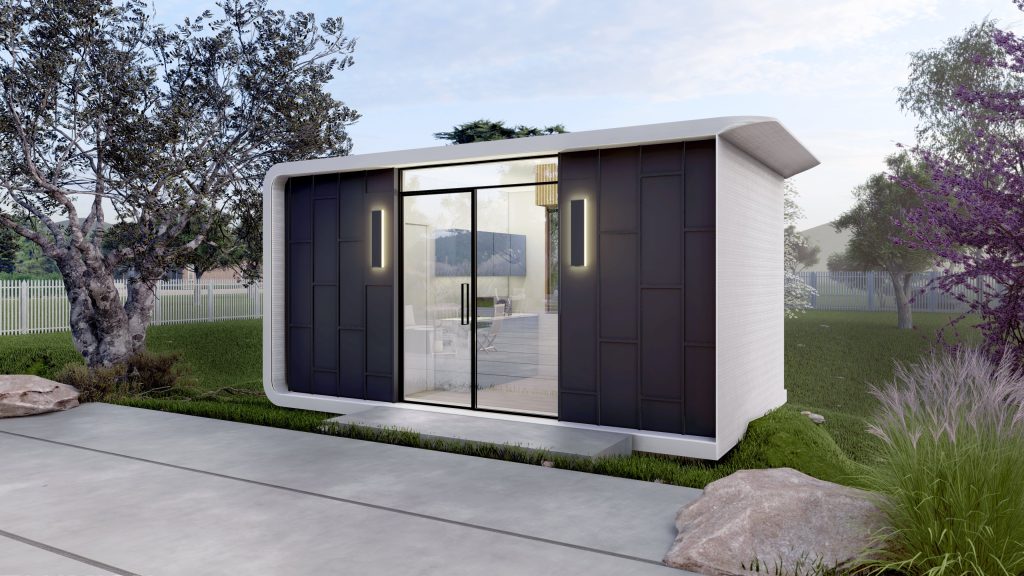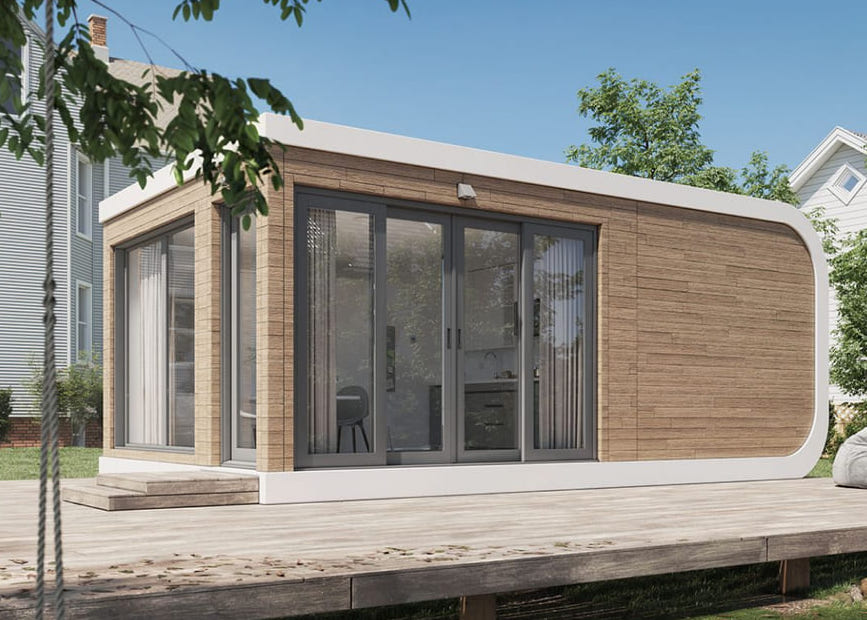Construction 3D printing start-up Azure Printed Homes has been contracted by Californian real estate firm ReInhabit to build ten new eco-friendly houses.
By choosing Azure to 3D print the homes from recycled plastic, ReInhabit expects to realize significant cost and lead time gains, in a way that drives up its return on investment (ROI). Once installed at three sites across Southern California, these modern accessory dwelling units (ADUs) are set to be made available for rent, with delivery expected at some point in 2023.
“Repurposing materials and 3D printing a complete structure in a fraction of the time is something that is a game changer for us,” explain ReInhabit Co-founders Rudy and Kim Dvorak. “We are also looking for the right finance partner to assist us with our current and future projects. While interest rates are rising, Azure homes can quickly generate very impressive ROI from rental income streams.”
Azure’s eco-friendly ADUs
Founded by property developers Ross Maguire and Gene Eidelman three years ago, Azure primarily focuses on developing homes faster, more economically and sustainably than traditional construction methods allow.
To make this possible, the company has established a factory-built approach to 3D printing homes, in which it creates backyard studios and ADUs from plastics set to be thrown away as landfill. According to Azure, recycling in this way “closes the sustainability loop” in construction 3D printing, while making the house building process much cheaper and 70% faster.
Earlier this year, Azure opened a home 3D printing factory, complete with 15,000 sq. foot of working space and a custom construction 3D printer. Since building the facility, the firm has received a number of orders, with backyard studio delivery due by the end of 2022, and ADUs or homes scheduled to ship next year. Demand for these is said to have been so high, that the company is now sitting on a $16 million waiting list, with clients including the likes of Oasis Development.
In February 2022, the real estate developer placed an order for fourteen 3D printed homes, which are set to be installed in Ridgecrest, California. When announced, it was said that through a combination of building airtightness and the use of low-carbon technologies such as heat pumps and solar panels, the structures would be energy efficient as well as relatively cheap to build.

ReInhabit’s restoration business
Working from its Californian HQ, ReInhabit specializes in turning historic, neglected homes into revitalized modern living spaces. Each of the company’s houses in Los Angeles and the surrounding Orange Counties has been staged by LA Salvage, thus just like Azure, its business revolves around repurposing discarded goods.
ReInhabit’s portfolio, which stretches from the Hollywood hills down to San Diego, has been designed by artists rather than architects. As such, the firm says its team aren’t “workers trying to be artistic because it’s trendy,” and due to their collective experience, they’re able to deliver a “more refined, design-driven product.”
That said, ReInhabit has taken a different approach with its latest project, and tasked Azure with 3D printing buildings from thrown away plastics instead. In doing so, the design studio anticipates not only being able to build and rent the homes more profitably, but to construct them with greater pace and efficiency.
“We have been researching the market for the right home builder to help us build quickly and at scale. California, like many states, needs to find more innovative ways to speed up the time it takes to build,” add ReInhabit Co-founders Rudy and Kim Dvorak. “Azure is doing something really special with their approach to the problem.”

AM in meeting US housing demand
Azure is now one of many 3D printing start-ups seeking to utilize the technology as a means of meeting demand for affordable housing. Mighty Buildings, which has adopted a similar strategy to manufacturing ADUs, unveiled plans to 3D print an eco-friendly neighborhood near California’s Coachella Valley last year.
On the flipside, there are also a number of construction 3D printing firms out there that, rather than fabricating and shipping ADUs, build homes on-site. ICON, for instance, has developed the Vulcan construction 3D printer, a machine it plans to use to build a 100-strong community of 3D printed homes in Texas.
Likewise, the COBOD BOD2 system continues to find applications as a means of constructing low-cost housing across the United States. In late-2021, Alquist 3D, the PERI Group and Printed Farms Florida each announced plans to COBOD 3D print affordable US homes, designed to meet demand in rural areas.
To stay up to date with the latest 3D printing news, don’t forget to subscribe to the 3D Printing Industry newsletter or follow us on Twitter or liking our page on Facebook.
While you’re here, why not subscribe to our Youtube channel? featuring discussion, debriefs, video shorts and webinar replays.
Are you looking for a job in the additive manufacturing industry? Visit 3D Printing Jobs for a selection of roles in the industry.
Featured image shows an Azure 3D printed ‘Iris’ ADU. Image via Azure Printed Homes.


